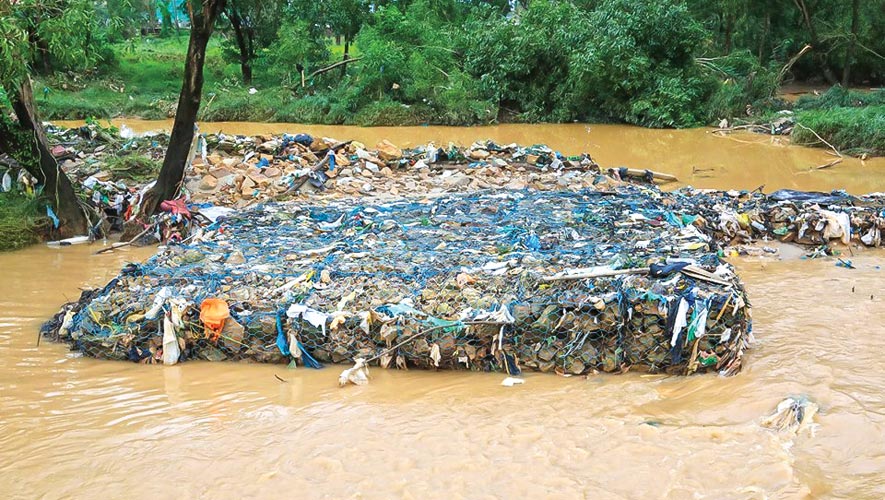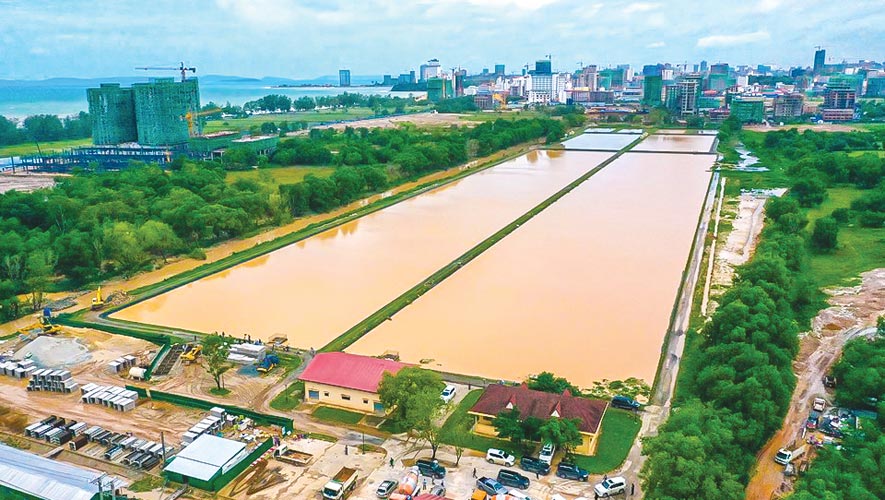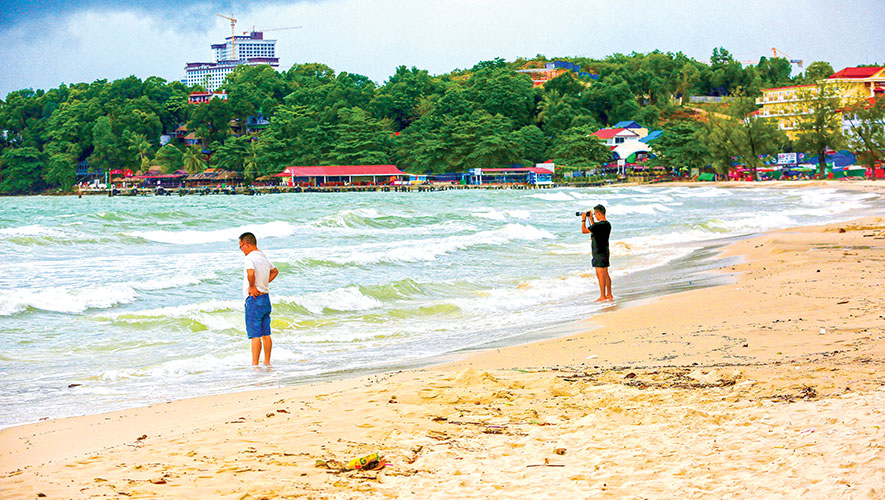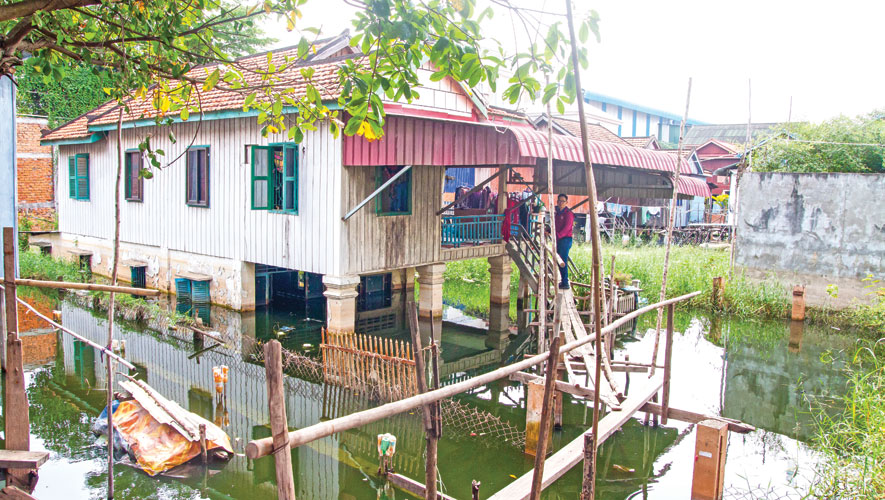Sihanoukville’s shaky environment has taken a step toward a better future.
For the latest Cambodian Business news, visit Khmer Times Business
A draft master plan and feasibility study report into the city’s sewage system is finalised. Now the government is seeking funds to run the project.
The report was conducted by Beijing Urban Construction Group and it is hoped the work will be finalised by 2030.
The Public Works and Transport Ministry last month says it plans to spend about $175 million to improve Sihanoukville’s poor wastewater treatment system and deal with drastic floods and overflowing sewage that have affected the municipality.
Transport Minister Sun Chanthol said during a workshop in the capital that he will push for the budget to be made available as soon as possible.
Sun was speaking at the workshop on the outcome of the master plan and feasibility study report of the municipal sewerage system development project in Preah Sihanouk.

Rapid growth
“We have to push this project very soon, otherwise we can’t control the amount of wastewater flowing into the sea anymore,” Sun adds. “Currently, we can treat about 30,000 cubic metres but we cannot cope with a higher volume until we improve the system.”
The rapid growth of the development and the increase of the population, tourists, and migrant labourers into Cambodia’s coastal Sihanoukville province has made has forced it to deal with challenging issues including wastewater, the environment and infrastructure.
Some people have described the area as intolerable for living in parts.
As of July this year, this province saw nearly 1,000 construction projects. Some are ongoing and some have been completed. There are 218 projects ranging from five to 42 storeys. Other investors are now aiming to build 50-storey buildings in the city.
The surge of the constructions projects including real estate, factories, the Special Economic Zone, hotels, casinsos, guesthouses, food courts, stores, gated communities and condominiums in particular challenge the environment. Most urgent is dealing with wastewater flowing into the sea, demanding urgent attention.
Last year, the amount of wastewater in Sihanoukville was 25,000 cubic metres per day and is predicted to reach 47,000 cubic metres a day in 2023 and will reach 64,000 cubic metres a day in 2030.
Not coping efficiently
Currently, the sewerage system and rainfall drainage systems are not coping efficiently with flooding from heavy rain and wastewater.
The scale and intensity of environmental degradation are critical across most of the city affecting the residential environment and the water quality at tourist beaches.
The existing sewage treatment plant was built under the “Provincial Town Improvement” project by Asian Development Bank in 2006. The design capacity is 6,900 cubic metres per day, of which 5,700 cubic metres a day is domestic sewage, while 1,200 cubic metres a day is industry sewage.
Sihanoukville currently has a 16.2-hectare wastewater treatment plant that can only deal with about 30,000 cubic metres released in the city and not from other parts of the province. This is considered inadequate for future needs and does not meet legal discharge standards. The existing sewage treatment plant has eight oxidation ponds and is located at the end of Ochhueteal Beach.
Water quality standards
The master plan of the municipal sewerage system development project in Sihanoukville will cover the whole city to address the problems and achieve the required water quality standards, meet the demand (population growth and development), decentralised treatment facilities, prioritisation according to the urgency of work and availability of funds and resources.
The master plan allows for a short-term project to connect all the populations in the province to the drainage system, water consumption of domestic and non-domestic consumers, upstream inflow capacity and variations of the concentration and discharge standards. The medium and long-term plans aim to build on that across a wider region and allow for population growth and higher discharge standards.
The current wastewater treatment plant has yet to meet the standards of a modern, mechanical wastewater treatment plant, says Heng Rathpiseth, director of the General Directorate of Public Works and Transport of the Ministry of Public Works.
“We have built four pumping stations and upgraded one pumping station in 2019. However, it is not enough for the rising demand. Therefore, we need to have a master plan to tackle the wastewater in Sihanoukville in the short, medium and long term,” he adds.
Increasing capacity
Sun, however, says that the investment on the new wastewater treatment plant would be used to improve the city’s sewerage system to treat 40,000 cubic metres of wastewater a day and construct a 45-kilometre main drainage network, a 47-kilometre drainage connection from houses and hotels, a wastewater pumping station and a 20-kilometre drainage system to release rainwater and prevent flooding.
Sun notes that in the future if the population and number of buildings increase in the city, the government will keep increasing the capacity of the wastewater treatment facilities to deal with up to 160,000 cubic metres per day.
He adds that relevant ministries and Preah Sihanouk provincial authorities are also considering charging residents, factory owners and other businesses for the wastewater that they discharge.
“It can be paid monthly and premises will be charged for the amount of clean water they use and also for the amount of wastewater they discharge,” says Sun. “Other countries also use this formula. We have not yet decided on the price mechanism.”
“However households, businesses and factories will pay different rates,” he adds. “We think of the price for consumers, factories and other industries and casinos. The price currently is 20 percent of sewage contributed via utility bills and 40 percent for factories and other industry, Sun adds.

Quality standards
“If we do not complete this job, we would not be able to maintain the beach and environment in the coastal province of Sihanoukville because the 16 hectares will not accommodate the sewage water from the hotels, commerce and industry,” he adds. At present, when the capacity in the treatment pond is full, excess waste water is released into the sea, jeopardising the quality of the water along the coast.
Sun says that the Public Works Ministry has conducted a feasibility study in Kampot, Kep, Koh Kong, Battambang and Kampong Cham and will continue to undertake master plans for 25 provinces.
As of June this year, the population in Preah Sihanouk stood at 302,887 and because of the rapid growth of the construction sector, the master plan and feasibility study for the municipal sewage system development in Sihanoukville should make it easier, says Preah Sihanouk’s governor Kuoch Chamroeun.
Kuoch also requires all the hotels and commercial centres, factories and other industries to build their own wastewater treatment plants before releasing the water into the public wastewater treatment plants or letting it flow into the sea directly.
“We also urge the Public Works Ministry, and the Economy and Finance Ministry to carefully study the monthly fees from that investment because we are afraid they could end up paying twice for water treatment facilities,” he adds.
“If they build wastewater treatment plants and flow the wastewater to the public pipe, do they still have to pay the fee?” Kuoch asks. This is something the government should consider.
The draft master plan envisages that from 2019 until 2021, the new wastewater treatment plant will able to treat sewage water at a rate of 40,000 cubic metre per day and between 60,000 cubic metres and 80,000 cubic metres per day in 2030.
Illegal constructions
On August 28, Economy and Finance Minister Aun Pornmoniroth issued urgent tasks for the Preah Sihanouk administration and relevant stakeholders to immediately restore five natural lakes and canals that are polluted because of the illegal release of waste by people who have built illegally around them including homes.
“The ministry and relevant institutions must be strict and place a clear deadline for construction owners and residents who built houses or other facilities on the lakes and canals. They all must be removed,” he added.
“Our long-term plan involves building a wastewater system and stations as well as the pipe and related infrastructure and put them into the master plan,” he added.




